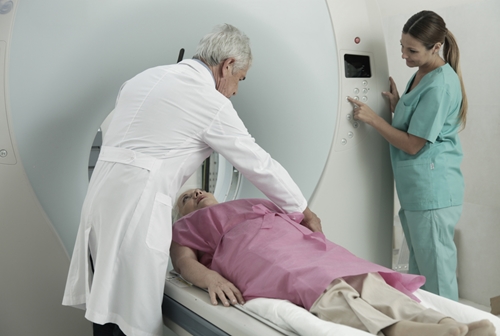Radiation dose reduction has steadily become a central focus for many radiologists who want to capture high-quality images while protecting patients from the potential harms of overexposure. Many federal initiatives have taken the opportunity to drive forward legislation that improves physicians' efforts to minimize dosages when conducting procedures such as CT lung cancer screenings.
According to FierceMedicalImaging, the Veteran's Health Administration has gotten involved in the continuing debate. The organization launched a new demonstration project that plans to assess its initial experience with implementing an effective screening program. Published online in the Annals of Internal Medicine, Linda Kinsinger, M.D., from the VHA's Office of Patient Care Services, and her colleagues underscored the discrepancies that exist on both sides of the debate.
On one hand, there are the advocates of low-dose screenings who want to see the process expedited and launched as soon as possible. However, there are some concerns about the health care industry's ability to support widespread implementation around the country. Rushing the release of these screenings could increase the potential for harm if equipment is not properly tested or maintained.
The VHA does not stand alone, as the U.S. Food and Drug Administration has also played a hand in dose reduction initiatives in the past.
FDA aims to help radiologists
In 2010, the FDA's Center for Devices and Radiological Health launched its Initiative to Reduce Unnecessary Radiation Exposure from Medical Imaging in response to growing concerns over radiation exposure. It promoted patient safety through two principles created by the International Commission on Radiological Protection: justification and dose optimization.
While physicians should follow these FDA guidelines, national adoption of CT-specific standards could go a long way in helping the cause. Kinsinger and her peers explained that the VHA's project provides a middleground approach between early adoption of LDCT screenings and waiting for additional evidence through staged implementation.
Similar to the U.S. Centers for Medicare and Medicaid Services' Meaningful Use program, this process would have a staggered effect of rolling out a widespread program. Over time, physicians would participate and gain valuable experience working with significantly lower doses of radiation.
The program is a two-year project that involves eight VHA medical centers that administer clinical services to roughly 500,000 veterans. The aim is to evaluate several ideas, including:
- Whether the VHA can identify the right candidates for screenings
- What resources will be needed to handle the increased demand
- Whether screenings and follow-ups can be as accurate and safe as the National Lung Screening Trial
- Will outcomes for patients with early-stage cancer meet the benefits of early detection?
A main roadblock to widespread implementation is the lack of Medicare coverage for lung cancer screenings. These procedures can come at a high cost for both patients and physicians alike, which can have a significant impact on decision-making. Hopefully, the VHA's program plans for data collection and analysis will help determine the costs and harms of LDCT and could be used to garner financial support from Medicare.
Contact Viztek for more information.
Ronny Bachrach
Latest posts by Ronny Bachrach (see all)
- Konica Minolta Debuts First-of-Its-Kind Digital U-Arm System at AHRA - July 27, 2016
- Researchers Detect Signs Of Stroke Risk Using MRI - June 27, 2016
- Imaging Biz: Q&A with David S. Channin MD: How to Make PACS Patient Centered - June 22, 2016










